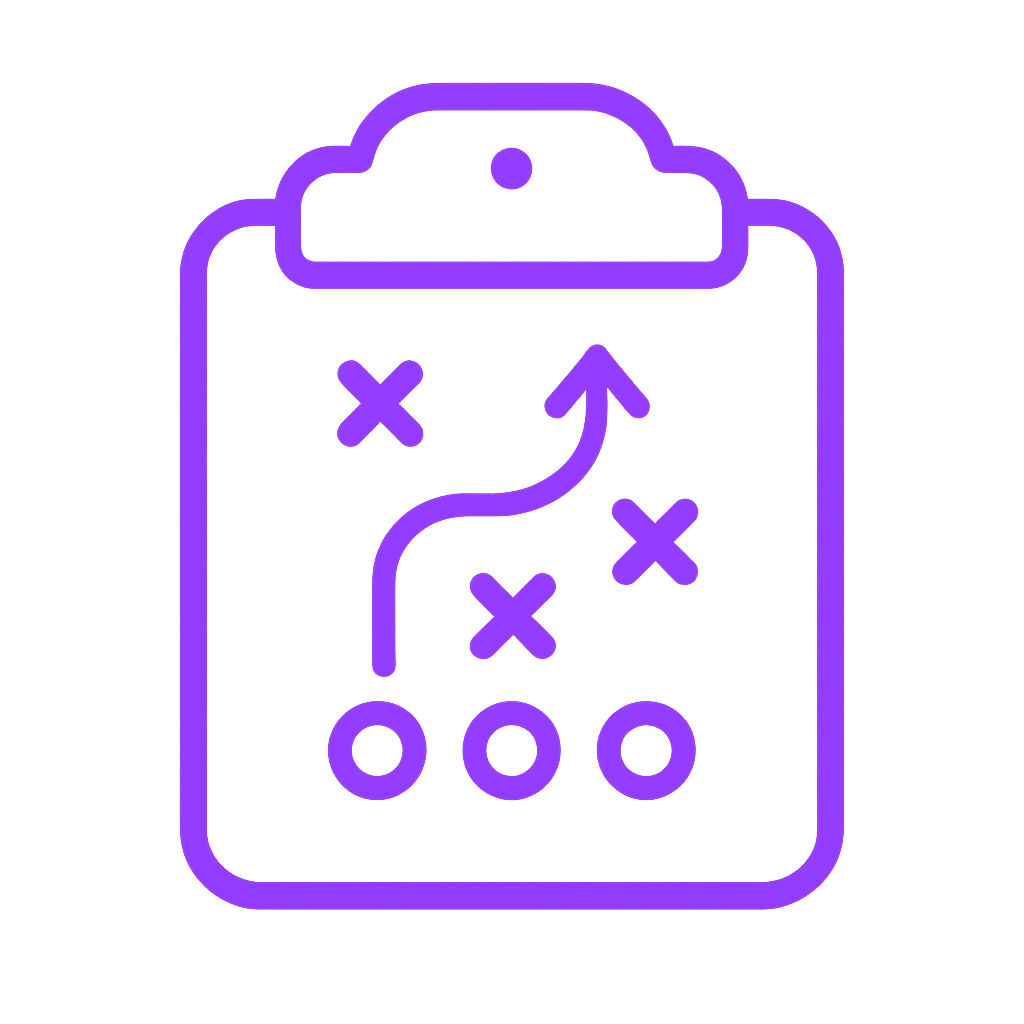Market Analysis Checklist: 12 Points for SMB Success



Market analysis is not a one-time checkbox, but rather the foundation of strategic decision-making for any small to medium-sized business (SMB). Thorough market analysis, from defining your target audience to monitoring economic trends, lets companies base their growth plans on evidence rather than guesswork.
A lack of research is a leading cause of new business failure. Investopedia notes that over 20% of startups fail in their first year, often because owners did not “satisfy a need” or had unrealistic market projections. By contrast, businesses that systematically gather market data make more intelligent choices. A recent Salesforce study found that 91% of small to medium-sized businesses (SMBs) using AI in their operations reported revenue increases.
This guide walks you through 12 critical elements of market analysis for small to medium-sized businesses (SMBs). SMB leaders can utilize this as a comprehensive checklist to develop a coherent, evidence-based growth plan.

A laser-focused target market is the starting point for every effective strategy. Defining who your customers are (and aren’t) ensures that product design, marketing messages, and sales efforts all align with the people most likely to make a purchase. Statistics confirm the payoff. For example, companies that utilize customer segmentation in their advertising can experience dramatic performance gains. Google reports that advertisers who leverage detailed analytics-based segments saw a 63% increase in conversions and a 58% lift in click-through rate compared to untargeted campaigns. In other words, tailoring campaigns to well-defined audiences delivers far higher ROI than “spray-and-pray” messaging.
Break your broad audience into segments based on demographics, needs, or behavior (e.g., age groups, purchase frequency, or specific pain points). Each segment should have a clear “pain point” you solve. For instance, a B2C retailer might segment its audience by age (e.g., teens, young professionals, retirees), whereas a B2B SaaS vendor might define its segments by company size and industry. The goal is to identify Ideal Customer Profiles (ICPs) for each segment. ImpelHub’s FanScope automates this to uncover which customer groups have the highest engagement and growth potential.
Use customer data (CRM records, surveys, social media analytics) and market research to flesh out each segment’s profile. Tools like Google Analytics Audience insights, social listening tools (e.g., Mention, Brandwatch), and survey platforms (SurveyMonkey, Qualtrics) can surface values such as average spending, decision criteria, or product usage. Crafting detailed buyer personas can help teams internalize these traits.
A clearly defined target market aligns the whole organization. Product features, pricing, and customer service can be optimized for that audience. Marketing budgets go further when spending is focused and targeted. For example, an e-commerce store might discover through segmentation that new parent households are its most significant growth segment; it then tailors its ads and content to that audience, rather than wasting money on broad audiences that are less likely to convert.

Once you know who you want to sell to, verify that there is sufficient demand for your product or service. In this step, quantify market size and trends so you aren’t building a business in a dwindling pond. Research can be surprisingly accessible, with government data, syndicated reports, and online analytics providing small to medium-sized businesses (SMBs) with low-cost ways to gauge demand.
Use official statistics (census data, industry reports) to estimate the total addressable market (TAM) and current demand. For example, in the U.S., the Census Bureau’s Business Builder tool provides local demographic and economic data on an interactive map. This can indicate the number of potential customers residing in your target area and the concentration of competitors in that area. Industry trade groups and market research firms (e.g., IBISWorld, Statista) often publish free summaries of market size and growth. Such data helps you answer, “How big is this market? Is it growing or shrinking?”
Online tools reveal what consumers are actively interested in. Google Trends, for instance, displays the popularity of search terms over time and across different geographical locations. If searches for “electric bikes” have sharply risen over the past year, that signals increasing demand. Seasonal patterns also emerge. If interest in “winter coats” peaks every October, you plan inventory accordingly. Google Trends even lets you compare up to five terms at once, so you can measure how your product category compares to adjacent ones.
For retail or e-commerce businesses, marketplace data is gold. Tools like Jungle Scout or Amazon’s sales estimator can reveal monthly sales volumes and trends for products similar to yours. For example, an entrepreneur can use Jungle Scout to discover that a specific fitness gadget sells approximately 5,000 units per month on Amazon, with a growing demand. You can also create quick surveys (via SurveyMonkey, Google Forms, or customer polls) to validate interest in a new product idea. Even a small sample of responses can help identify which product features or price points are most appealing to customers.
Knowing demand prevents wasted investments. If the market size is small or declining, you may pivot or find a niche submarket. Conversely, identifying a large, underserved segment can become a growth opportunity (e.g., discovering high search volume for an unmet need). In practice, combine quantitative and qualitative data: public stats to size the pie, and online analytics to see where it’s heading. Every sales forecast or business plan should start with this measured “reality check” on demand. With AI-driven platforms (such as ImpelHub’s Insight360), you can automate this. The bottom line is measure, don’t guess. Back your strategy with evidence of genuine market demand, so you avoid chasing vanity opportunities.

No business exists in a vacuum. Understanding competitors is critical for positioning your offering and finding strategic gaps. This involves identifying who your real rivals are, what they do well, and where they’re vulnerable. A classic starting point for many businesses is a SWOT analysis (Strengths, Weaknesses, Opportunities, Threats). As the Business Development Bank of Canada emphasizes, “SWOT analysis is a framework for identifying and analyzing your organization’s strengths and weaknesses, as well as the opportunities and threats you are facing.” But is that enough is the real question!
List competitors in different categories – direct (identical product/service) and indirect (substitutes, future threats). For example, a boutique coffee shop may consider other cafes, as well as ready-to-drink coffee brands or retail coffee machines. Tools like SEMrush’s Market Explorer or SimilarWeb can help spot competitors by web traffic and category overlap. ImpelHub’s FoeScan goes further by scoring hundreds of potential rivals and filtering down to the top 5 “true” competitors by similarities (product features, audience, size, geography).
For each main competitor, collect data on pricing, product features, marketing positioning, and customer reviews. Public sources include competitors’ websites, social media, news articles, and customer review sites. You can also use tools like Crayon or Brandwatch to track competitors’ digital marketing activity and social sentiment. For example, automated alerts might notify you when a rival launches a new ad campaign or changes their pricing. The goal is to answer, What unique value do they claim to offer? What customer segment are they targeting? What new moves are they making?
Compare your performance to that of competitors on key indicators. This might include market share, pricing, product range, or customer satisfaction. Some firms even use “battleboards” or scorecards. ImpelHub’s Battleboard™ is for example, is a visual dashboard that rates a company versus its competitors on 20+ dimensions (product quality, brand strength, price, distribution, etc.), with scores ranging from 0 to 10. Such benchmarking highlights where you excel and where you need improvement. If you find that competitors have stronger brand awareness, you may prioritize marketing efforts. If their products are more expensive, your strategy might emphasize value.
Competitive analysis should inform a concrete strategy. For instance, if you discover a competitor targets your ideal customer profiles with a poor customer experience, that’s an opportunity to emphasize superior service. Alternatively, if a competitor lowers prices aggressively, you may need to defend your margin or pivot to a differentiated feature. By understanding the competitive landscape, you reduce the risk of being blindsided by a newcomer or a market shift.

Markets evolve. Keeping an ear to the ground on trends, news, and shifts is crucial so you can adjust quickly. This step involves continuous monitoring of the political, economic, social, and technological forces that shape demand and competition. It includes everything from industry innovations to social media buzz.
Subscribe to key industry publications, follow thought leaders, and use trend-tracking tools. For example, platforms like Google Trends can indicate when interest in your industry spikes or wanes. There are also AI-driven trend detection tools, such as Exploding Topics and Ahrefs’ Content Explorer, that can surface emerging keywords and topics before they reach mainstream popularity. In practice, a sudden jump in mentions of “sustainable packaging” might signal a new trend in retail.
Stay informed about macroeconomic factors. For instance, a government change in import tariffs or licensing requirements can create new opportunities or hurdles. Economic indicators also fall under the category of market dynamics. Subscribe to feeds or alerts on central bank policy, tax law changes, or global events that affect purchasing power. Agile SMBs adjust their plans, for example, if consumer confidence is dropping. A growth plan might then emphasize loyalty programs or products that are recession-proof.
Use social media monitoring to track sentiment and conversations. Tools like Mention, Brandwatch, or even Twitter searches can alert you to customer chatter about your brand or product category. For example, a spike in negative tweets about a key competitor could signal a chance to gain favor. Likewise, keeping an eye on customer reviews across platforms (Yelp, Facebook, and Amazon reviews) can show emerging concerns or desirable features. Remember, customers often publicly complain about unmet needs long before experts write about them.
Track new technologies that could disrupt your market. This includes AI tools relevant to your field, as well as hardware or process innovations. A classic case is the rise of 3D printing, which disrupted manufacturers by enabling low-cost prototyping. SMBs should scan tech news sites and research reports to identify such inflection points.
Monitoring is not a one-time task, but rather a part of daily or weekly operations. For example, set up Google Alerts for key terms (your product name, leading competitors, industry keywords). Consider regular team briefings on “market news”. The strategic value is agility, and companies that act on fresh information can capture opportunities first. AI tools can help automate trend-spotting. The bottom line is to track changes relentlessly so you’re never caught flat-footed.

Understanding your customers’ requirements, both stated and unstated, is crucial for effective product development and messaging. This means gathering and analyzing customer feedback, behavior, and preferences to ensure your offerings truly align with what buyers want. In practice, this often involves looking at both qualitative input (surveys, reviews, social media comments) and quantitative data (purchase histories, support tickets, feature usage).
Actively solicit customer opinions. Surveys (such as email surveys, feedback forms, and polls on your website) can directly ask users which features they value or what improvements they would like to see. Incentivize completion with discounts or giveaways to boost response rates. Even a brief 5-question survey can reveal, say, that 60% of buyers want a bundled-service option or that many find a specific feature confusing.
Online reviews and support tickets are a goldmine. As one customer-experience report finds, 75.5% of consumers trust online reviews, and over 90% of them read them before making a purchase. Systematically analyze this feedback, and what pain points do customers frequently mention? (Use text analytics or even simple tagging to aggregate common themes.) For instance, if many reviews indicate that the site is “too slow to load,” that’s a clear area for improvement. Additionally, cross-tabulate feedback with purchase segments to determine if only high-volume buyers complain about X. Such nuances can shape product roadmaps.
Keep an eye on evolving customer expectations and “unmet needs”. Social listening tools can help here: if users on social media are asking “When will brand X offer feature Y?”, you’ve spotted a demand. Customer service chats or emails also reveal requirements. New products often succeed by meeting needs customers didn’t know they had until now.
Many CRM and analytics platforms have built-in survey and feedback modules. For example, HubSpot and Salesforce can trigger automated NPS/CSAT surveys after a purchase. Conversational AI, such as chatbots, can ask follow-up questions in real-time. If budget allows, specialized Voice-of-Customer tools apply AI to extract sentiment and themes from large volumes of text feedback.
By mapping what customers truly care about, you can prioritize product improvements that boost satisfaction (and referrals) rather than incurring costs in low-impact areas. Remember, customer needs evolve. A feature that delighted users three years ago may now be assumed; meanwhile, new expectations (e.g., sustainability, faster delivery) have arisen. Continuously validating needs prevents product-market misalignment. As CX Today reported, nearly 91% of consumers pay attention to the experiences of other customers in online reviews. If companies respond promptly to issues, customer trust rises (88% of people say they are likely to use a brand that actively responds to reviews.

If your business relies on physical presence or if market demand varies by region, it’s crucial to analyze where to play. This means assessing geographic markets (locations, cities, countries) and channels (online, retail, wholesale) to find the most promising areas for growth.
For brick-and-mortar small to medium-sized businesses (SMBs), site selection can significantly impact their performance. Use demographic and economic data to compare locations. Public tools, such as the U.S. Census Business Builder (section maps) or local chamber of commerce reports, provide insights into population density, income levels, and industry presence by zip code. For example, a new coffee shop might find that Neighborhood A has a high density of young professionals (prime coffee drinkers) but no cafes, indicating low competition. In contrast, Neighborhood B may have multiple cafes but also high foot traffic. A data-driven site analysis will weigh such factors.
Determine which sales channels (e-commerce, retail, B2B distribution, etc.) are most suitable for each product and segment. Some products sell much better online in metropolitan areas, while others may require physical shelves. Analyze your current sales mix: your website sales dominate in urban regions, but phone orders come from rural areas. Tools like Google Analytics geographic reports or sales CRM reports by region can reveal channel preferences.
Don’t overlook “location-based advertising”. Targeting local customers with geo-fenced ads or Google My Business (Google Maps/Local Pack) listings often yields higher conversion. For example, a user searching “auto repair near me” is ready to act immediately. Ensuring your business appears prominently in such local searches can capture high-intent traffic. Additionally, local advertising (whether digital or out-of-home) can be measured for its return on investment (ROI). Some reports claim that location-targeted ads are dozens of percent more effective than generic ads (e.g., by focusing on in-market audiences), though the exact uplift varies by industry.
Evaluate the economic health of markets. The unemployment rate, average income, and consumer spending patterns are macroeconomic factors that influence demand. For example, luxury retailers may avoid areas with below-average incomes. Data sources include national statistical agencies, the World Bank (for international expansion), and regional reports from the Federal Reserve and the European Central Bank.
Overall, analyzing location and channels uncovers where to focus resources. Especially for an SMB, targeting marketing and expansion efforts to the most promising regions prevents wasted spend. In today’s digital age, even small businesses can affordably research local markets. The strategic payoff is huge: get the location and channel mix right, and you maximize reach to your ideal customers. As the data shows, nearly half of search demand is location-driven, so ignoring this is not an option.

With a defined target market and knowledge of different markets, refine your focus by dividing your customers into distinct segments. Customer Segmentation extends beyond the “target market” by identifying meaningful groups within it based on behavior or value. This allows personalized engagement, addressing each segment’s unique needs and thereby increasing conversion and loyalty.
Age, gender, income, occupation. (E.g. “millennial gamers” vs. “baby boomer casual gamers.”)
Age, gender, income, occupation. (E.g. “millennial gamers” vs. “baby boomer casual gamers.”)
Lifestyle, values, attitudes. (E.g., “eco-conscious consumers” vs. “price-sensitive bargain shoppers.”)
Company size, industry, and growth stage.
Modern analytics can reveal segments you might not have expected. For instance, web analytics might cluster customers by browsing patterns: people who spend more than 10 minutes on your site and view certain pages could be one segment. AI tools (like ImpelHub’s Segment module) can automatically cluster customers using dozens of attributes.
Once segments are defined, tailor your approach.
Craft marketing copy that addresses each segment’s specific pain points. For example, an outdoor apparel retailer might emphasize technical performance to one group, but style and brand to another.
Bundle offerings differently. A software vendor might offer a “Startup Pack” at a low entry price for one segment and an “Enterprise Pack” with advanced features for larger firms.
Use marketing automation (Email, PPC, social ads) to run separate campaigns for different segments.
Segmentation sharpens ROI and customer satisfaction. For SMBs, this means doing “more with less” – smaller ad spend, higher engagement, and fewer cold leads.

Pricing sits at the heart of market competition. Setting the right price point, one that reflects a customer’s willingness to pay while ensuring healthy margins, requires an analysis of costs, competitor pricing, and the perception of value. This is especially complex in dynamic markets or when launching new products. A well-crafted pricing analysis can significantly boost profits for many businesses; even a 1% price increase (with costs constant) yields a disproportionate profit gain (often cited as 10% profit increase when margins are 10%).
Research how sensitive your customers are to price changes. For example, if a 5% price hike results in only a 2% drop in sales volume, raising prices may increase revenue. Conversely, in a highly price-sensitive market, you may need to compete aggressively. Past sales data can be informative: plotting historical price vs. demand (on- and off-sale periods) often reveals these elasticities.
Track your competitors’ prices and promotions to stay informed. Online price-tracking tools can automate the monitoring of rival retail prices across channels. For example, if you see a direct competitor constantly undercutting you by 10%, you may decide to adjust your pricing tiers or highlight superior features to justify a premium.
Today’s pricing strategies often leverage real-time data. An AI-driven pricing engine can adjust prices automatically based on demand, inventory, and market factors.
AI pricing utilizes predictive analytics, real-time data, and advanced algorithms to determine the optimal pricing approach for each product or service, thereby maximizing revenue and profitability while ensuring competitive prices.
-HubSpot
For instance, airlines and ride-sharing companies frequently employ dynamic pricing that adjusts to time, demand, and remaining inventory. Small retailers can adopt simpler versions – e.g., using software that raises prices when stock is low or during peak season, and drops them to clear inventory before a product refresh.
Where possible, use A/B testing for pricing. For example, an online SaaS company might offer one cohort a free trial and another a 10% discount to determine which yields a better lifetime value (LTV). Similarly, retailers might test a bundle price vs. individual sales to find the optimal offer structure. Track results closely: a small price change early can inform a full rollout.
In one case, a consumer goods manufacturer implemented an AI-based dynamic pricing system. The AI analyzed competitor prices, seasonality, and customer segments, then adjusted prices daily. The result was a 15% increase in overall revenue and a 5% boost in profit margin in the first year, without losing market share (because prices stayed within an optimal window).
Overall, analyzing location and channels uncovers where to focus resources. Especially for an SMB, targeting marketing and expansion efforts to the most promising regions prevents wasted spend. In today’s digital age, even small businesses can affordably research local markets. The strategic payoff is huge: get the location and channel mix right, and you maximize reach to your ideal customers. As the data shows, nearly half of search demand is location-driven, so ignoring this is not an option.

Market analysis isn’t just about defending your turf – it’s about finding where to expand. “Growth areas” may refer to new customer segments, adjacent product categories, or geographic markets. This step utilizes insights from earlier analysis to identify innovations or investments that are likely to yield high returns.
Re-examine segmentation and demand data for underserved niches. For example, analysis might reveal that your product is particularly popular with a younger audience, suggesting a line extension targeted at that demographic. Conversely, an aging customer base might indicate a need to develop entry-level offerings for younger buyers.
Compare customer needs against your current offerings. If customers frequently request a feature not in your product, that’s a clue to innovate. Tech companies often use “feature gap” analysis to rank missing features based on their potential impact.
Look at customer lifetime value (CLV) metrics. High CLV segments might warrant dedicated upsell campaigns or loyalty programs. For example, if one segment tends to buy add-ons over time, target them with personalized bundles. Calculating projected returns on these efforts is crucial: an automated revenue forecast can demonstrate that focusing on customer retention (e.g., subscription renewals) often yields a 5– to 10-times return on investment (ROI) compared to the cost of acquisition.
Global or adjacent markets might be attractive. Study adjacent industry data. If you sell eco-friendly household cleaners nationally, could you consider expanding to janitorial supplies for businesses (a B2B growth opportunity)? Check for market reports or consult industry experts. In some cases, global expansions are feasible, e.g., an app-based business in the U.S. may find similar demand patterns in Europe or Asia, and localization and new distribution channels would then follow.
It’s helpful to know which sectors are in high demand. SMBs can align their offerings with high-growth domains (e.g., adding data services). Similarly, emerging trends like the surge in cybersecurity or sustainability products indicate growth tales worth exploring.
The primary focus is on identifying systematic opportunities. Rather than haphazardly launching new products, use the data you’ve gathered: segment performance, customer feedback, trend analysis, and benchmarks. Even simple calculations of incremental revenue from a proposed initiative can inform decisions. For example, if adding a subscription option is expected to capture 10% of users at $X each, you can project the extra revenue and weigh it against costs. In short, translate insights into growth experiments – test small, measure, and scale up the winners.

Macro-economic factors can have a direct impact on SMB strategy. Key indicators, such as inflation, interest rates, employment, and consumer confidence, all influence customer spending power and input costs. Globally, indicators like GDP growth and supply chain indices reveal broad trends. Good market analysis keeps these on the radar to anticipate shifts.
Monitor a small set of economic indicators relevant to your business. For consumer-facing small to medium-sized businesses (SMBs), key metrics include consumer confidence indices and retail sales growth. B2B firms may watch industrial production or business investment indexes. Financial news sites and government statistical agencies regularly publish these. For example, the Conference Board’s Consumer Confidence Index or the OECD’s Leading Indicators. Sudden changes (e.g., a sharp drop in confidence) may trigger tighter credit terms or a shift in marketing strategy.
Track any published key performance metrics in your sector. For instance, if you are in hospitality, government reports on occupancy rates are essential. Many industries have sector associations or research firms (e.g., the National Restaurant Association). Knowing the industry’s current growth rate or average price changes helps you benchmark your performance.
If you operate internationally, currency exchange rates and trade policies matter. Fluctuations can make your prices more or less competitive. Monitor foreign exchange trends if you source materials abroad or sell in other currencies. Trade news (tariffs, free trade agreements) also affects supply costs.
As an example of technology intersecting with economics, many small to medium-sized businesses (SMBs) are rapidly adopting AI to stay ahead. A recent Salesforce report highlighted that 75% of small to medium-sized businesses (SMBs) are at least experimenting with AI, with growing businesses leading the way (83% of increasing SMBs do so, compared to 55% of declining ones). Those with AI saw stronger results, reflecting how small to medium-sized businesses (SMBs) utilize technology to navigate market conditions. Technology adoption itself can serve as an economic indicator: widespread AI use suggests an innovation-driven market environment.
Don’t Ignore This Macro Data. For example, if inflation is rising, customers may start trading down or delaying purchases. An SMB could respond by increasing promotional offers or optimizing costs. Conversely, in boom times, a growth-focused SMB might invest in capacity or expansion. The key is agility, having a process (perhaps a quarterly review) to revise forecasts and budgets in light of economic data.

Traditional market forecasts (based on historical averages or basic trend lines) often fall short in our dynamic world. AI-driven forecasting tools can incorporate a multitude of data sources, from time-series sales data to social sentiment, to generate more accurate predictions. This step involves moving beyond gut-feel forecasts to systematic, data-powered projections.
Modern platforms (some built into CRM or ERP systems) use machine learning to predict future sales, churn, or market demand.
Some AI tools allow “what-if” scenario analysis. You can simulate what happens to demand if we raise the price by 5%. If the new competitor cuts prices by 10%, how might our market share evolve? This is often achieved by feeding data ranges into the AI model and allowing it to predict outcomes. For instance, a retailer might test a scenario where advertising spend increases 20% next quarter and see the projected sales bump.
Research consistently shows the advantage of AI in forecasting. A global survey by Salesforce found that 91% of small to medium-sized businesses (SMBs) using AI reported that it boosted their revenue. Moreover, forward-thinking SMBs expect AI to be a game-changer; in the same report, 78% stated that AI will be critical to their company’s future. Practically, this means companies with AI forecasts can plan inventory more efficiently, avoid stockouts or overstock, and optimize promotions.
Integrating AI forecasting transforms market analysis from a retrospective to a forward-looking approach. Instead of saying “last year sales grew 5%,” you’ll say “given current trends, we expect 7% growth next year.” This data-driven foresight helps align all departments’ procurement orders and inventory in advance of predicted demand, allowing marketing budgets to ramp up when needed and finance to secure funding at the right time.

All the analysis so far, market sizing, segmentation, competitor intelligence, customer needs, trends, and forecasts, should feed into a coherent market plan. This final step integrates insights into actionable strategy. It means deciding on the marketing and product initiatives that will best achieve your goals, supported by the evidence gathered.
Lay out potential growth strategies (new campaigns, product launches, partnerships, etc.) and score them on expected impact. For example, ImpelHub’s NextMove automates this. It ranks strategies by “Impact” (how much key metrics will move) and “Innovation” (how novel the approach is), then highlights the top opportunities. Even without AI, a simple matrix (impact vs. effort) helps prioritize tasks effectively. For each high-impact idea, estimate the resources required and the projected return on investment (ROI). For example, if launching an online training course requires $10,000 in development but promises $50,000 in new revenue, that jump in ROI can justify the investment.
Allocate budget and team capacity based on the highest-priority strategies. If expansion into a new region scored high, assign resources to market research and a local sales lead. If a customer retention initiative is tops, dedicate staff to loyalty programs. In practice, this often involves cross-functional planning, where marketing budgets, sales targets, and product roadmaps are all aligned with the chosen strategies.
Convert strategies into concrete action plans with timelines. ImpelHub’s Launch feature (for example) generates a weekly task list from the chosen strategies. In a straightforward approach, create a Gantt chart or checklist that outlines key activities, owners, and deadlines. Good planning software (Asana, Trello, or even a detailed spreadsheet) should track progress. The plan might include marketing calendars, product development milestones, and sales campaigns, all linked to the market analysis insights that informed them.
Crucially, build metrics to track the performance of each strategy. If a plan is to “increase sales in segment X by 20%,” define KPIs (e.g., segment sales, conversion rates) and review them regularly (weekly or monthly). This feedback loop lets you adjust tactics quickly. As Spotify learned with email campaigns, data-driven iteration yields significant benefits. By rigorously A/B testing content and frequency, they continuously improved open rates and conversions.
Finally, embed AI where it is most helpful. ImpelHub’s NextMove has already been mentioned, but keep an eye on any AI tools that can handle routine planning tasks, for example, tools that automatically generate a marketing calendar based on seasonality. The role of the leadership team is to provide vision and constraints, while letting data guide the specifics.
Market analysis is an iterative discipline. It begins with rigorous data gathering and ends with decisive action, looping continuously as conditions change. By methodically working through these elements, SMB leaders develop a holistic view of the business environment. The outcome is a culture of evidence-based decision-making. Rather than relying on anecdote or “what worked last year,” your team depends on up-to-date market signals. This builds agility and confidence. In rapidly shifting markets, small to medium-sized businesses (SMBs) have the advantage of being lean. Utilizing market analysis, especially AI-enabled tools, enables them to move faster than large enterprises. As macro trends intensify from global supply chain shifts to AI disruptions, those who lean on data will have the upper hand.
Small to medium-sized businesses (SMBs) can significantly improve their odds of success by treating market analysis as a strategic, ongoing process. The concrete steps above, enriched with data, tools, and real-world examples, provide a roadmap for translating analysis into action.

2 combos (1 competitor × 2 dimensions)
20 combos $5 per additional combo
100 combos $4 per additional combo
280 combos $3 per additional combo

7 Steps / 8 – 10 days / 2 – 3 hours of your time
Maximize your impact with ImpelHub’s Growth Lever Identifier—our AI-powered system that discovers your single biggest growth lever and accelerates your success. By analyzing your revenue streams, marketing channels, and core metrics, it highlights the most effective path to scalable growth and pinpoints your highest-ROI strategy, so you can focus on what truly matters, multiply your revenue, and stay ahead in today’s competitive market. Our clear, data-driven action plan ensures you can scale faster and more efficiently than ever.
Insight360, part of the “Your Business” pillar in the Business Brain/Context framework, delivers data-driven insights across 9 categories and 40+ business aspects, including market positioning, competition, revenue, trends, and brand identity.
It drives two key outputs:
With a multidimensional business view, Insight360 helps optimize positioning, enhance engagement, and accelerate growth.
Insight360+ expands on Insight360 with 15 additional dimensions, offering a deeper analysis of business strategy. It provides a self-reflective framework to uncover opportunities in:
With Insight360+, businesses refine strategies, strengthen positioning, and drive sustainable growth.
FanScope is a comprehensive catalog of buyer types, categorized by 10 key attributes, helping decision-makers assess and refine target audiences before segmentation.
As the first step in segmentation, FanScope informs:
By analyzing buyer roles, revenue segments, and purchase probabilities, FanScope enhances targeting, optimizes resources, and improves sales and marketing efficiency.
The Segmentation Module enhances customer targeting with Rated ICPs, Personas, and Firmographics (B2B), assessing each ICP across 22 attributes, including:
ICP Scoring evaluates profiles on 10 numerical dimensions, enabling businesses to prioritize high-value targets efficiently.
FoeScope is a competitive analysis framework that evaluates competitors across three revenue segments—small, medium, and large—relative to the business’s revenue. It assesses:
As a precursor to CounterEdge, FoeScope helps businesses identify and categorize key competitors, setting the stage for deeper competitive strategy development.
CounterEdge analyzes competitor growth strategies, their impact on the business, and countermeasures to stay competitive. It evaluates:
By leveraging CounterEdge, businesses can anticipate threats, mitigate risks, and implement winning strategies.
NextMove is a growth strategy framework that helps businesses identify, evaluate, and implement high-impact strategies. Each strategy is numerically rated across 10 dimensions, similar to ICP Rating, to prioritize the most effective paths for expansion.
With NextMove, businesses gain a data-driven approach to strategic growth, ensuring scalability, market expansion, and long-term success.
Launch-Execution Blueprint creates high-level execution plans for growth strategies, prioritizing them based on impact, feasibility, and business alignment.
By leveraging Launch-Execution Blueprint, businesses can streamline execution, focus on high-impact strategies, and drive measurable growth.
Maximize your impact with ImpelHub’s AI-powered Growth Lever Identifier. By analyzing revenue streams, marketing channels, and core metrics, it uncovers your biggest growth lever and highest-ROI strategy.
With a clear, data-driven action plan, you can focus on what matters, scale faster, and stay ahead in today’s competitive market.
Maximize your impact with ImpelHub’s Growth Lever Identifier—our AI-powered system that discovers your single biggest growth lever and accelerates your success. By analyzing your revenue streams, marketing channels, and core metrics, it highlights the most effective path to scalable growth and pinpoints your highest-ROI strategy, so you can focus on what truly matters, multiply your revenue, and stay ahead in today’s competitive market. Our clear, data-driven action plan ensures you can scale faster and more efficiently than ever.
Feature Gap Analysis is a powerful tool within ImpelHub that identifies missing or desired features based on the needs and expectations of the target audience. By leveraging Business Brain, it ensures that feature recommendations are strategically aligned with business goals and market demand.
Key Benefits:
Identifies Missing Features – Pinpoints gaps in the product or service offering.
Aligns with Target Audience Needs – Ensures features meet user expectations.
Prioritization via Impact Scoring – Helps decision-makers invest wisely.
Data-Driven Scoring Mechanism
Each feature is rated across five numerical dimensions, enabling businesses to prioritize development efforts effectively:
Revenue Boost
Cost Reduction
Customer Acquisition
Customer Retention
Customer Satisfaction
By leveraging Feature Gap Analysis, businesses can make informed investment decisions, enhance their product-market fit, and drive customer engagement and growth
UXI (User Experience Investigation) is a UI/UX audit framework that evaluates core business pages with unparalleled depth, powered by ImpelHub Audit. Unlike standard audits, ImpelHub leverages Business Brain, ensuring that recommendations are contextually aligned with the company’s strategy, market position, and growth objectives.
Key Audit Components:
Feature & Objective – Identifies key UI/UX elements and their purpose.
Details & Justification – Explains audit findings in a business-relevant manner.
Impact & Area – Evaluates influence on user experience.
Rationale – Context-driven reasoning for suggested improvements.
Impact-Driven Scoring Mechanism
Each UI/UX strategy is numerically rated across five dimensions, helping decision-makers prioritize investments:
Revenue Boost
Cost Reduction
Customer Acquisition
Customer Retention
Customer Satisfaction
This data-driven scoring allows businesses to allocate resources effectively, ensuring maximum ROI on UI/UX improvements and driving sustained growth
Detailed Execution Blueprint is a task list and project roadmap that breaks down high-level strategies into step-by-step, week-by-week execution plans, ready for team assignment and implementation.
Key Features:
Detailed Task Breakdown – Converts strategies into actionable steps.
Week-by-Week Execution Timeline – Ensures structured and phased implementation.
Team Assignments – Each plan is ready to be assigned to the relevant team for execution.
Operational Clarity & Accountability – Provides a clear roadmap to track progress.
By leveraging Launch-Detailed Plan, businesses can ensure smooth execution, improve efficiency, and drive successful implementation
FanScope is an extensive catalog of potential buyer types, both direct and indirect, categorized using 10 key attributes. It helps decision-makers identify, evaluate, and include or exclude buyer types before the segmentation process.
As the first step toward segmentation, FanScope informs:
ICP (Ideal Customer Profile) Definitions
Persona Development
Firmographics (B2B segmentation)
ICP Scoring
By analyzing buyer roles, revenue segments, pain points, and purchase probabilities, FanScope enables businesses to refine their target audience, optimize resource allocation, and improve sales and marketing efficiency.
The Segmentation Module refines customer targeting through Rated ICPs, Personas, and Firmographics (B2B). Each ICP is assessed across 22 attributes, covering:
Profile & Behavior – Segment, characteristics, decision-makers, and buying behavior.
Business Fit – Pain points, goals, product needs, and purchase drivers.
Engagement Factors – Technology, content consumption, marketing channels, and objections.
Strategic Insights – Value proposition, competition, and customer service needs.
ICP Scoring rates each profile on 10 numerical dimensions, helping decision-makers quickly prioritize the best targets for sales and marketing strategies
FoeScope is a competitive analysis framework that identifies and evaluates competitors across three revenue segments—small, medium, and large—relative to the business’s revenue. It assesses competitors based on:
Key Products/Services – Most similar offerings.
Geography – Market overlap.
Target Audience – Shared customer base.
Similarity Score & Reasoning – Measures alignment with the business.
FoeScope serves as a precursor to CounterEdge, laying the groundwork for deeper competitive strategy development by helping businesses identify and categorize their most relevant competitors
CounterEdge analyzes competitor growth strategies, their impact on the client’s business, and countermeasures to stay competitive. It evaluates:
Competitor Strength & Market Impact – Key advantages and threat level.
Affected Business Touchpoints – Areas influenced by competition.
Adaptation Strategy – Actionable countermeasures.
Impact Grade & Rationale – Severity of threat (1-5).
Potential Business Benefits – Strategic opportunities.
By leveraging CounterEdge, businesses can anticipate threats, mitigate risks, and implement winning strategies.
NextMove is a growth strategy framework designed to help businesses identify, evaluate, and implement high-impact strategies. Each strategy is numerically rated across 10 dimensions, similar to ICP Rating, allowing decision-makers to prioritize the most effective paths for expansion.
Key Assessment Areas:
Strategy Type, Objective & Target Audience – Defines the approach, aligns with Ideal Customer Profiles (ICPs), and ensures relevance to market needs.
Key Tactics & Content Marketing – Outlines the execution plan, including marketing initiatives to drive engagement.
Required Resources & Risk Assessment – Identifies necessary investments, potential risks, and feasibility.
Timeline & Measurement Metrics – Provides a structured roadmap for execution and tracking success.
Relevance (%) & Potential Impact – Scores strategies based on alignment with business goals, market trends, and competitive landscape.
By leveraging NextMove, businesses gain a data-driven approach to strategic growth, enabling them to quickly assess and implement the most effective strategies for scalability, market expansion, and long-term success.
GTM/Scale Up Playbook creates high-level execution plans for selected growth strategies, ensuring effective implementation. It prioritizes strategies based on impact, feasibility, and alignment with business objectives.
Key Components:
Phases – Defines the execution stage.
Strategy Score – Numerical rating for prioritization.
Strategy Suggestions & Rationale – Recommended actions with justification.
Highlights – Key takeaways and strategic advantages.
Related Strategy – Links to complementary approaches.
Targeted ICPs (ICP Phase) – Aligns execution with the right customer segments.
By leveraging GTM/Scale Up Playbook, businesses can streamline execution, focus on high-impact strategies, and drive measurable growth.
Insight360 is a key component of the “Your Business” pillar within the Business Brain/Context framework. It delivers data-driven insights across 9 key categories, covering 40+ critical business aspects, including market positioning, competitive landscape, revenue analysis, industry trends, and brand identity.
These insights drive two strategic outputs:
Custom Growth Strategies – Tailored plans developed with AI, Impelian, Impelist, and human expertise to support business expansion and address key challenges.
Contextual UI/UX Audit – Identifies feature gaps and aligns product offerings with market needs.
Insight360 provides a multidimensional understanding of the business, industry, and competitive landscape. By leveraging these insights, businesses can optimize market positioning, enhance customer engagement, and accelerate growth.
Insight360+ enhances Insight360 by analyzing a business at a deeper level through 15 additional dimensions. It provides a self-reflective framework to uncover strategic opportunities in:
Sales & Revenue Optimization – Pricing models, sales processes, and client strategies.
Market & Digital Presence – Online marketing, industry positioning, and partnerships.
Innovation & Technology – AI /Tech integration and product/service development.
With Insight360+, businesses gain a more comprehensive perspective to refine strategies, strengthen market positioning, and drive sustainable growth.

Founder & CEO

Co-Founder & Chief Revenue Officer
Please enter your email to download the Sample Score Card.
Please enter your email to download the playbook.
Unlock exclusive tools for growth